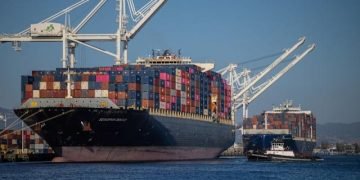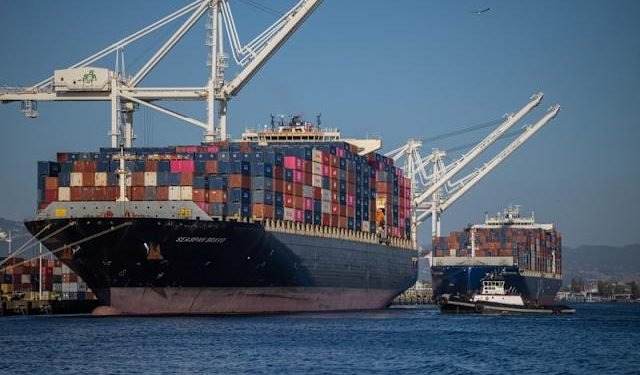By Maria Kalamatas | August 7, 2025
Singapore —
Over the past several weeks, ocean shipping rates between Asia and the United States have nosedived, forcing carriers and exporters to confront a sharp imbalance between supply and demand. What was once a stable route is now facing its steepest price drop in over two years.
On the West Coast, the average spot rate for a 40-foot container has fallen by more than half since June. East Coast lanes have seen similar erosion, with many forwarders describing a rate environment that feels “unrecognizable” compared to early 2025.
A fragile market under pressure
Shipping companies had anticipated a moderate rebound this summer. Instead, demand softened — quickly. U.S. importers became cautious in response to shifting tariff talk and weaker-than-expected consumer data. Meanwhile, too many vessels were already committed to Pacific routes.
One operations director for a multinational forwarding firm described it simply: “We added ships to meet a demand that never came.”
As a result, capacity now far exceeds cargo volumes. Space is available, but profits are not.
Schedules disrupted, reliability fading
The freight rate collapse isn’t just a pricing issue — it’s affecting how shipping lines operate. Some carriers have started cancelling scheduled departures outright. Others are re-routing ships to avoid geopolitical risks, especially in the Red Sea, adding days to journey times.
For exporters relying on consistent timetables, this creates knock-on effects inland. Several distribution hubs in the U.S. have reported late arrivals and inventory gaps, especially in sectors like automotive and electronics.
Shippers caught in hesitation
With prices falling week after week, many companies are waiting before confirming bookings. But hesitation comes at a cost. If vessel capacity is suddenly reduced again, space could tighten quickly. It’s a risky balance — act too soon, and you pay too much. Wait too long, and your cargo might not move.
A senior logistics manager at a U.S. retailer summed it up this way: “It feels like a game of chicken with the market. No one wants to move first.”
What’s next for carriers?
To restore balance, carriers may be forced to implement more blank sailings and even pull some ships from the schedule entirely. That could stabilize rates, but at the cost of service reliability.
For now, the message is clear: ocean shipping in Q3 is volatile, and flexibility will matter more than forecasts.























